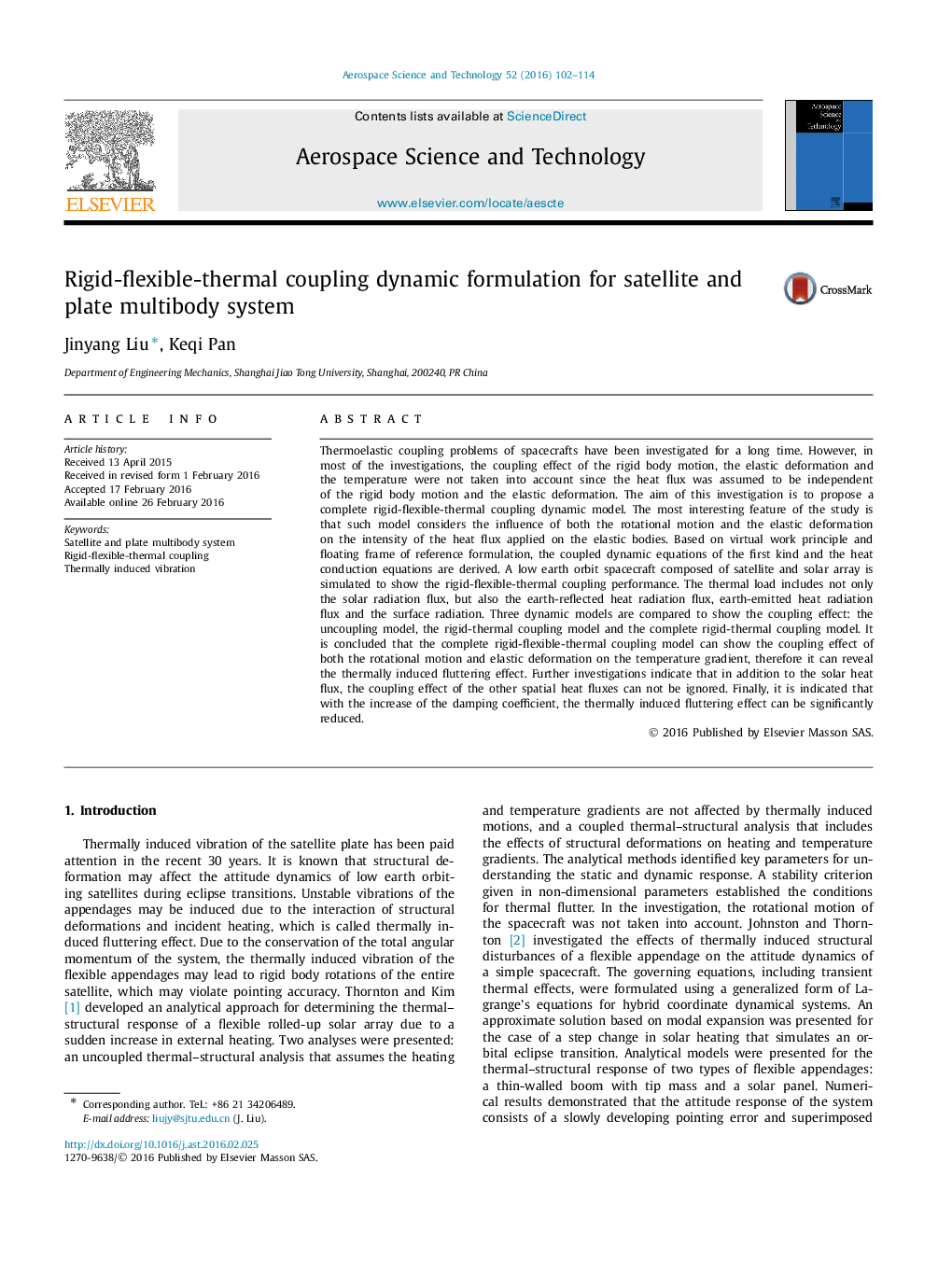| Article ID | Journal | Published Year | Pages | File Type |
|---|---|---|---|---|
| 8058628 | Aerospace Science and Technology | 2016 | 13 Pages |
Abstract
Thermoelastic coupling problems of spacecrafts have been investigated for a long time. However, in most of the investigations, the coupling effect of the rigid body motion, the elastic deformation and the temperature were not taken into account since the heat flux was assumed to be independent of the rigid body motion and the elastic deformation. The aim of this investigation is to propose a complete rigid-flexible-thermal coupling dynamic model. The most interesting feature of the study is that such model considers the influence of both the rotational motion and the elastic deformation on the intensity of the heat flux applied on the elastic bodies. Based on virtual work principle and floating frame of reference formulation, the coupled dynamic equations of the first kind and the heat conduction equations are derived. A low earth orbit spacecraft composed of satellite and solar array is simulated to show the rigid-flexible-thermal coupling performance. The thermal load includes not only the solar radiation flux, but also the earth-reflected heat radiation flux, earth-emitted heat radiation flux and the surface radiation. Three dynamic models are compared to show the coupling effect: the uncoupling model, the rigid-thermal coupling model and the complete rigid-thermal coupling model. It is concluded that the complete rigid-flexible-thermal coupling model can show the coupling effect of both the rotational motion and elastic deformation on the temperature gradient, therefore it can reveal the thermally induced fluttering effect. Further investigations indicate that in addition to the solar heat flux, the coupling effect of the other spatial heat fluxes can not be ignored. Finally, it is indicated that with the increase of the damping coefficient, the thermally induced fluttering effect can be significantly reduced.
Keywords
Related Topics
Physical Sciences and Engineering
Engineering
Aerospace Engineering
Authors
Jinyang Liu, Keqi Pan,
